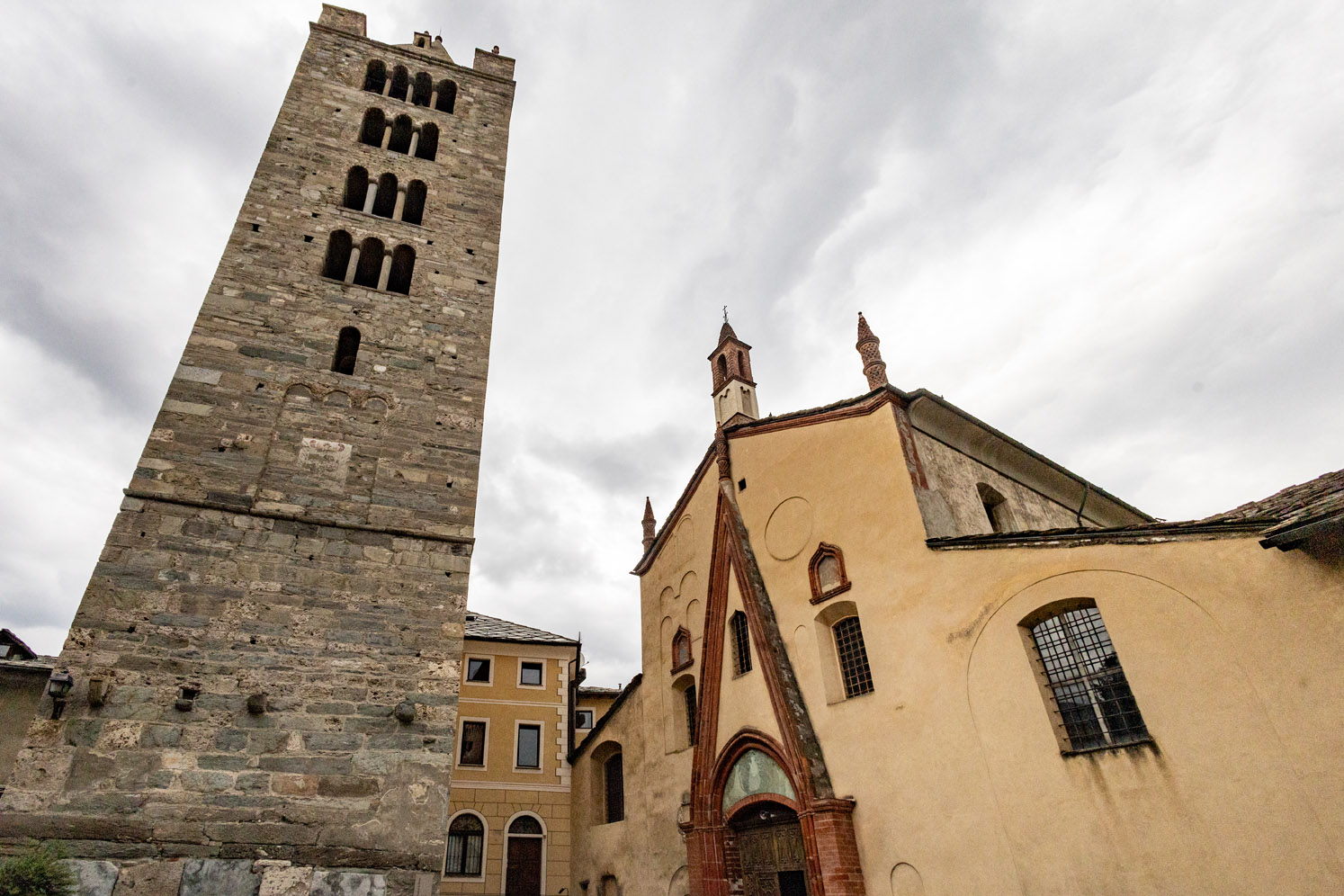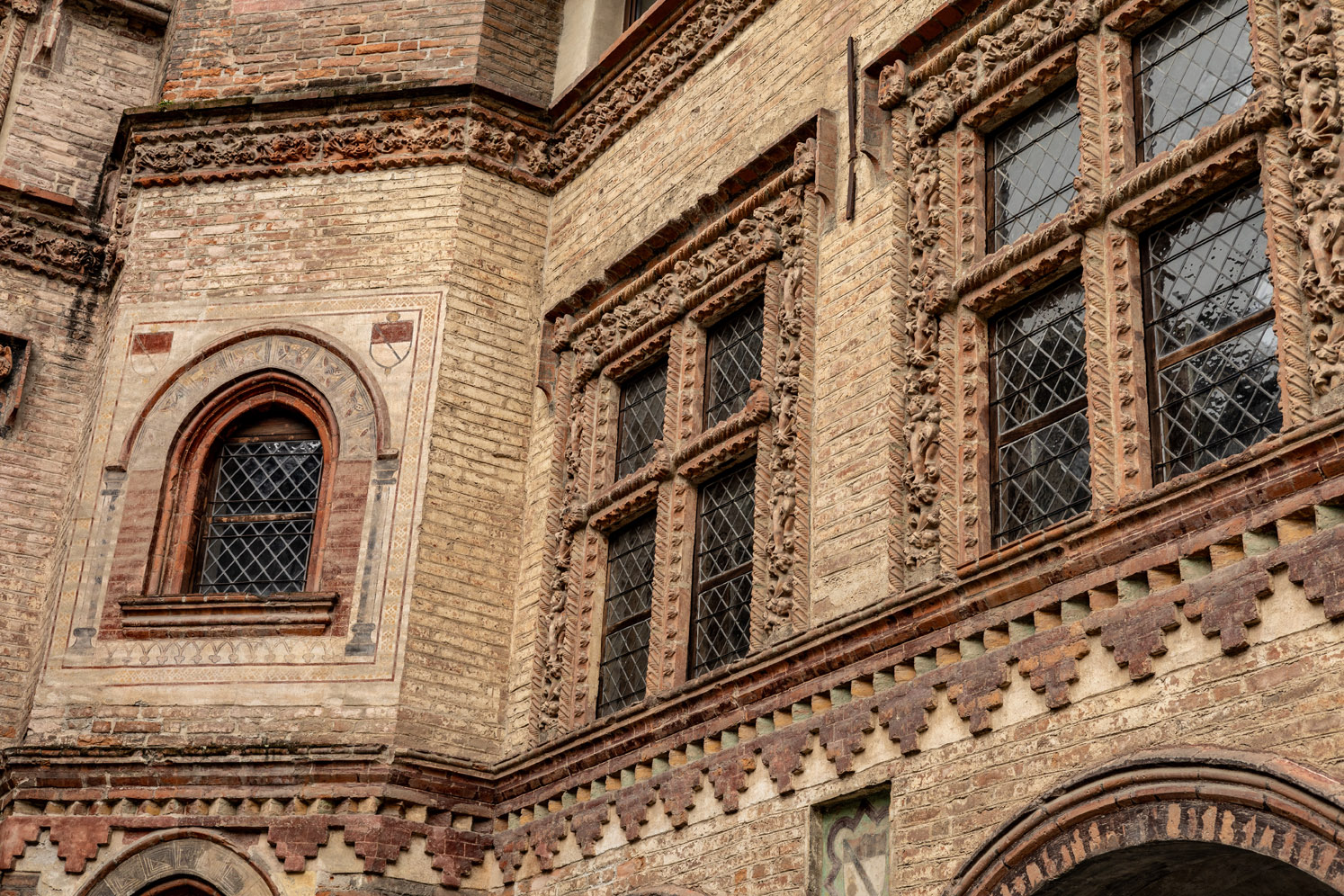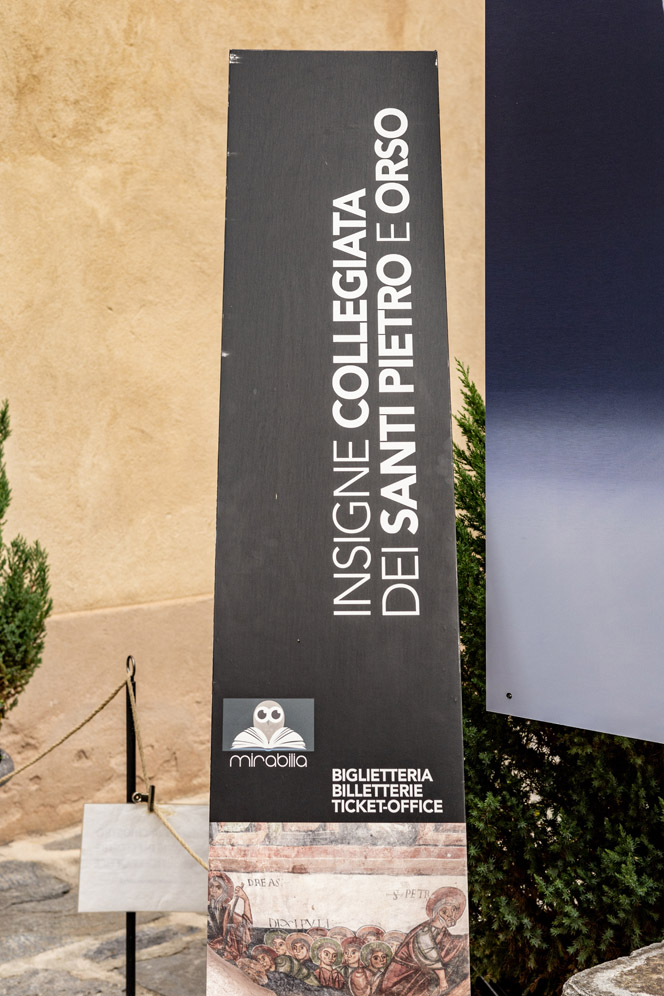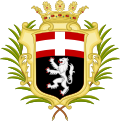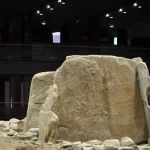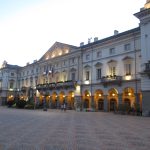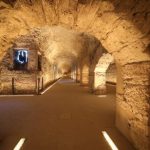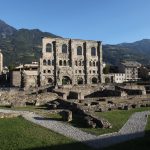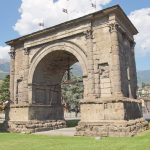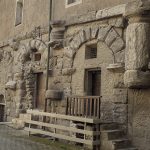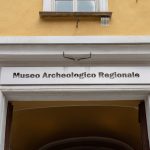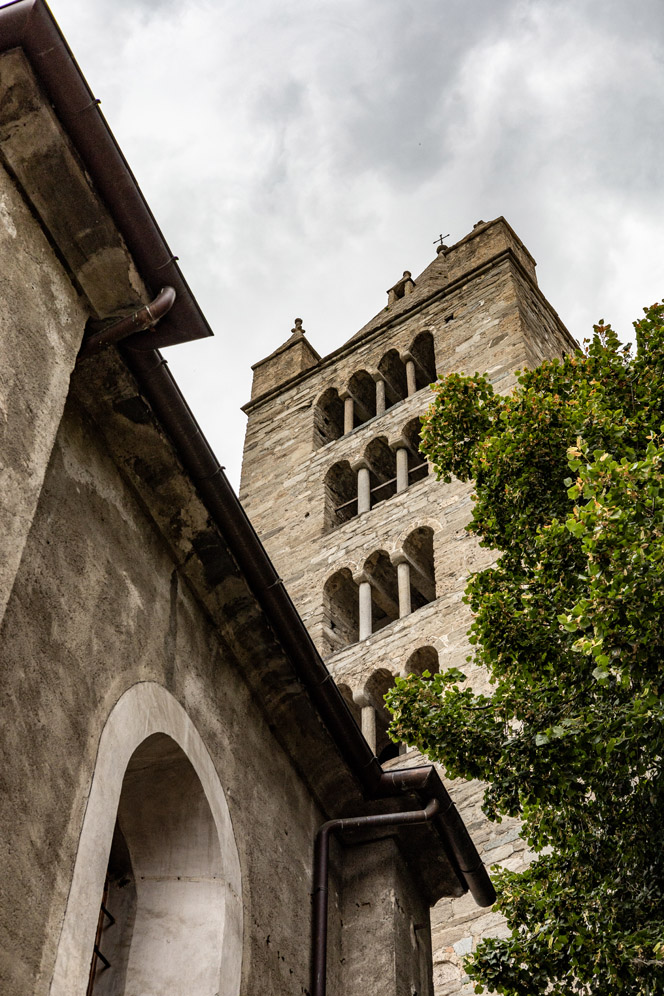
Aosta Collegiate Church of St. Bear
The present church is the result of several transformations over the centuries. Between Symbolism and History
The Collegiate Church of Saint Bear: one of the oldest and most important churches in Aosta The Collegiate Church of Saint Bear is one of the oldest and most important churches in Aosta.
Located outside the Roman city walls, it stands on an area that in imperial times housed a necropolis.
The church is dedicated to Saints Peter and Bear, the latter the patron saint of the city and protector of artisans. History of the Collegiate Church of St. Bear The present church is the result of several transformations over the centuries.
It was first built in the 5th century, but was renovated in the Romanesque style between the 10th and 12th centuries at the behest of Bishop Anselm I. From this period remain the crypt, the isolated bell tower-the highest in the valley at 44 meters-and the Ottonian frescoes preserved in the attic. The 15th-century Gothic extension In the 15th century, Prior George of Challant promoted a further extension in the Gothic style, giving the church its present appearance.
The three naves are covered with cross vaults, the choir is enriched with wooden stalls and stained glass windows, and the floor features a mosaic depicting Samson and the lion with a palindromic phrase. The facade and cloister of the Collegiate Church of St. Bear The facade of the church features two Romanesque portals and a Gothic rose window.
Next to the church is the Romanesque cloister, dating from the 12th century, a period when the canons of St. Bear adopted the rule of St. Augustine.
The cloister is one of the most beautiful and best preserved in Italy, with 40 carved capitals narrating biblical scenes, episodes from the life of St. Bear and ornamental motifs.
The whole is surrounded by a portico with round arches supported by paired columns.



Collegiate Church of St. Bear The History
The Collegiate Church of St. Bear is one of the most important and ancient churches in Aosta, located outside the Roman city walls on an area that housed a necropolis in imperial times. The church is dedicated to Saints Peter and Bear, the latter being the patron saint of the city and protector of artisans.
The present church is the result of several transformations over the centuries.
It was first built in the 5th century, but was renovated in Romanesque style between the 10th and 12th centuries at the behest of Bishop Anselm I.
The crypt, the isolated bell tower (the highest in the valley at 44 meters) and the Ottonian frescoes preserved in the attic remain from this period.
In the 15th century, Prior George of Challant promoted further expansion in the Gothic style, which gave the church its present appearance, with its three naves covered by cross vaults, the choir with wooden stalls and stained glass windows, and the floor mosaic depicting Samson and the lion with a palindromic phrase.
The facade of the church features two Romanesque portals and a Gothic rose window The Romanesque cloister of Sant'OrsoNext to the church is the Romanesque cloister, dating back to the 12th century, when the canons of St. Bear adopted the rule of St. Augustine.
The cloister is one of the most beautiful and best preserved in Italy, with its 40 carved capitals narrating biblical scenes, episodes from the life of St. Bear and ornamental motifs.
The whole is surrounded by a portico with round arches supported by paired columns.
The Priory of Saint Bear
The priory of Sant'Orso is the only terracotta building in the region, built in the 15th century again at the initiative of Giorgio di Challant.
Its interior features a spiral staircase (viret) and a chapel frescoed with scenes dedicated to St. George, the prior's namesake saint and patron.

Church of St. Lawrence
Chiesa Paleocristiana di San Lorenzo, Via Sant'Orso, Aosta, AO, Italia

Collegiate Church of St. Bear
Chiesa Collegiata dei Santi Pietro e Orso, Via Sant'Orso, Aosta, AO, Italia

Megalithic Area of Saint-Martin-de-Corléans
Area megalitica di Saint-Martin-de-Corléans, Corso Saint Martin de Corleans, Aosta, AO, Italia

Aosta Cathedral
Cattedrale di Santa Maria Assunta e San Giovanni Battista, Piazza Papa Giovanni XXIII, Aosta, AO, Italia

Cryptoportic Forensic
Criptoportico Forense, Piazza Papa Giovanni XXIII, Aosta, AO, Italia

Regional Archaeological Museum
Museo Archeologico Regionale, Piazza Pierre-Leonard Roncas, Aosta, AO, Italia

